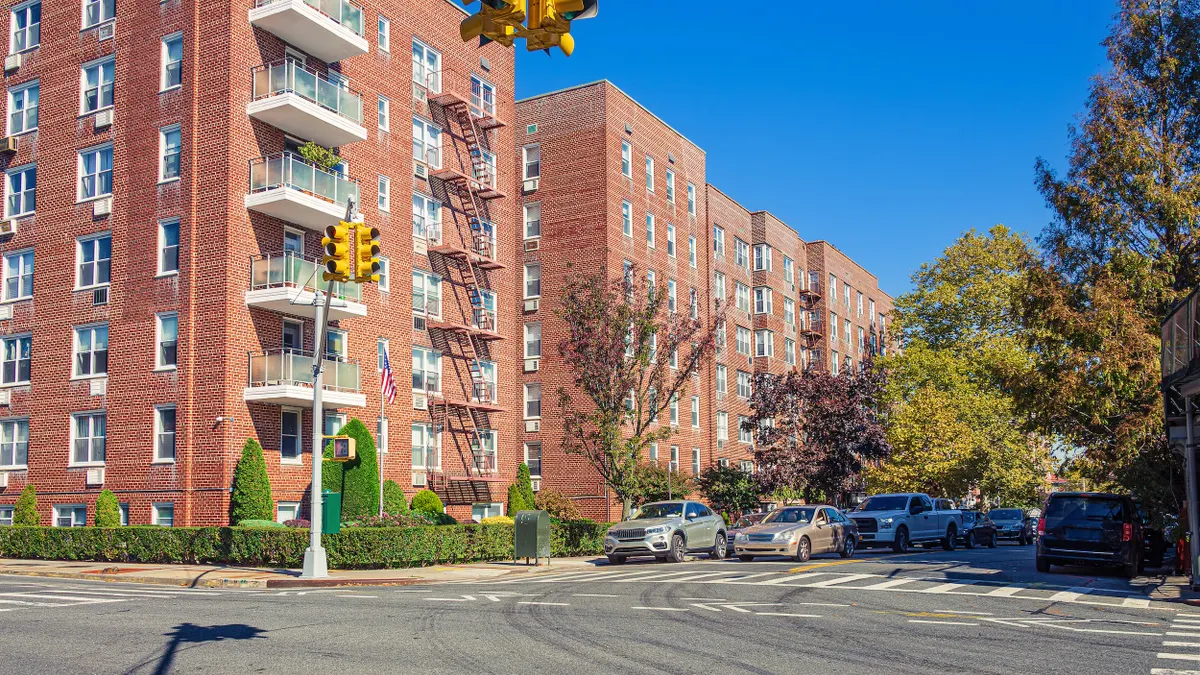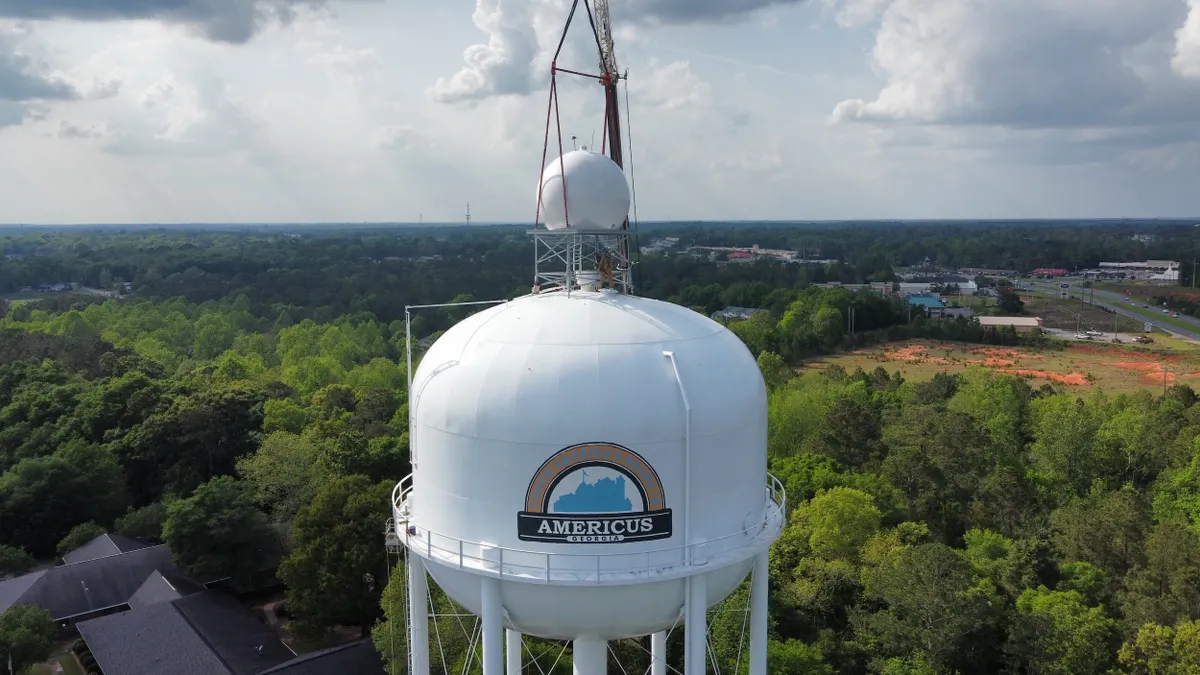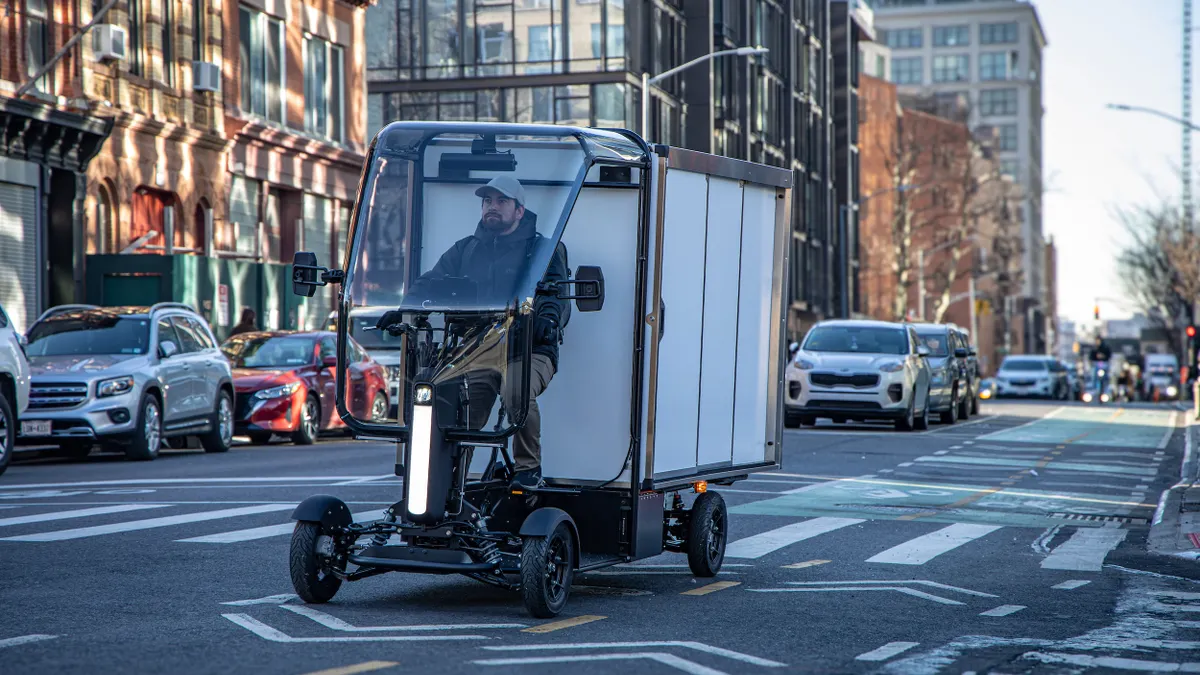Dive Brief:
- The New York City Mayor’s Office of Climate & Environmental Justice and the Urban Land Institute New York last week released a road map for decarbonizing co-ops and overcoming the technical, funding and regulatory challenges of complying with Local Law 97, New York City’s building emissions reduction law.
-
A “significant number” of New York City’s cooperative residential buildings must comply with the law’s increasingly stringent emissions limits, and “the prospect of financing decarbonization solutions appears to be creating the greatest cause for concern among co-op boards and building owners,” the report states.
- The report emphasizes the need to assure co-op boards that decarbonization will be an incremental process over the next 25 years. “It's … not just setting up targets, not just setting up goals and visions, but providing resources and providing infrastructure so that people can do the work that we're asking them to do,” said MOCEJ Executive Director Elijah Hutchinson during a press conference introducing the report last week.
Dive Insight:
LL97, which passed in 2019, requires buildings over 25,000 square feet to reduce their emissions by 40% by 2030 and reach net zero by 2050. It is crucial to New York State’s commitment to reach 100% carbon-free electricity by 2050, according to Hutchinson.
Yet LL97 presents “significant technical and financial challenges” for co-op owners, Hutchinson said in a statement.
The report recommends actions the city, lenders and co-op boards can take over the next year in the areas of collaboration, education, finance and regulatory reform.
“We focused on ways to achieve LL97’s goals through strategies that respect the complexity of the buildings themselves, and without hurting the affordable and high-quality housing stock we rely on,” said Jonathan Meyers, a partner with HR&A Advisors, who chaired the panel that created the report.
Over the next year, the report recommends the city implement and encourage:
1. Flexible financial incentives aligned with existing building loans and needed improvements.
2. Collaboration between key funders.
3. A development corporation focused on decarbonization.
4. Adjustments to city regulations, including zoning constraints.
5. A cohort-based approach providing co-ops with economies of scale and access to resources relating to LL97 compliance.
6. Training and education to reassure co-op boards that the city does not expect them to decarbonize overnight.
7. Aggregated building data and case studies to support co-op building cohorts with capacity-building measures.
8. Rulemaking that aligns capital with regulatory cycles to streamline and prioritize decarbonization.
9. A long-term strategic decarbonization plan.
Co-ops “are a big part of New York City's housing legacy” and a “critical asset for everyday New Yorkers, working class New Yorkers,” Hutchinson said during the press conference, so “it's really important that we get all of these policies right.”













